Steel Structure Welding Technology
Steel Structure Welding Technology
Steel structure welding is the primary connection method of steel structure: to melt the welding rod and steel partially by the heat generated by the electric arc, and then condense into a weld by cooling, thus connecting the welded parts to one.
In the field of steel structure fabrication and installation, arc welding is widely used. The main arc welding types are flux-coated manual arc welding, automatic submerged arc welding, semi-automatic and automatic CO2 gas shielded welding, and self-protected arc welding. In some special applications, it is necessary to use electro slag welding and bolt welding.
Table of Contents:
1.1.Electric arc welding
1.2.Electroslag welding
1.3.Contact welding
1.4.High-frequency welding
2.Steel structure welding
3.Steel Structure Welding Materials
4.Main tools
4.1.Welding conditions and requirements
4.2.Reasons for Steel Structure Welding Deformation
4.3.The main types of welding deformation
4.4..Reasons for welding deformation
4.4.1.Deformation prevention work caused by steel structure welding process
4.4.2.Structure Control of Welding Nodes
4.4.3.Improvement of the welding process of steel structure building
Steel Structure Welding Methods
(1) welding rod arc welding
AC welding machine: The equipment is simple, the operation is flexible and convenient, and it can be welded in various positions without weakening the cross-section of the component, ensuring quality and low construction cost. It is a welding method widely used in construction sites.
DC welding machine: The welding technology is the same as using an AC welding machine, the arc is stable during welding, but the construction cost is higher than that of an AC welding machine. It is used for steel structures with higher welding quality requirements.
Electric arc welding
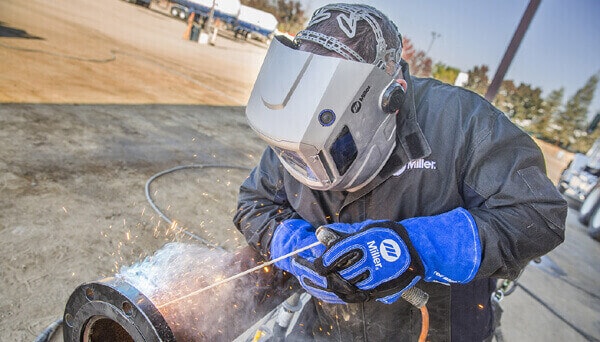
(2) Submerged arc welding
The metal is melted under the flux, the welding heat is concentrated, the penetration depth and efficiency are high, the quality is good, there is no splash phenomenon, the heat-affected zone is small, and the welding seam is uniform and beautiful; the operation technology should be low, and the working conditions are good. Straight fillet welds and butt welds with more considerable welding lengths and thicker plates in the factory.
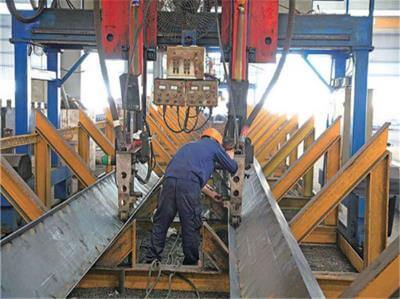
(3) Semi-automatic welding
The same as submerged arc welding machine welding, the operation is more flexible, but it is not convenient to use, always used for welding short or curved corners and butt welding.
(4) Gas shielded welding
It is light welding wire welding with CO2 or inert gas instead of welding flux protection arc; it can be welded in all positions, with good quality, fast melting speed, high efficiency, power saving, no need to remove welding slag after welding, but avoid wind during welding. They are usually used to weld thin steel plates and other metals, welding large thickness steel columns and steel beams.
gas shielded welding
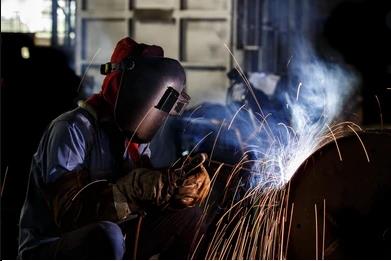
The electric resistance heat welding produced by the current passing through the liquid slag can weld significant thickness welds—welding of large thickness steel plate, large diameter round steel, and cast steel. Combustion of acetylene and oxygen is mixed with a flame to melt metal for welding; when welding non-ferrous metals and stainless steel, gas welding powder protection is required. Sheet steel, cast iron, connectors, and surfacing welding.
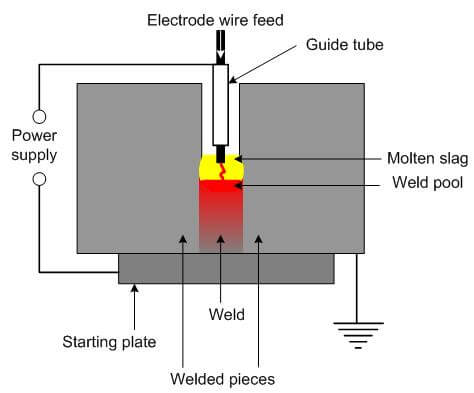
Electroslag welding
Utilize the resistance heat welding generated when the current passes through the weldment, steel butt welding, steel mesh spot welding, embedded iron welding.
Use the heat generated by high-frequency resistors for welding. The longitudinal weld of thin-walled steel pipe.
Steel structure welding plays an essential role in the manufacturing and installation process, the quality of steel structure welding directly affects the appearance, and also plays a vital role in the strength of steel structure building.
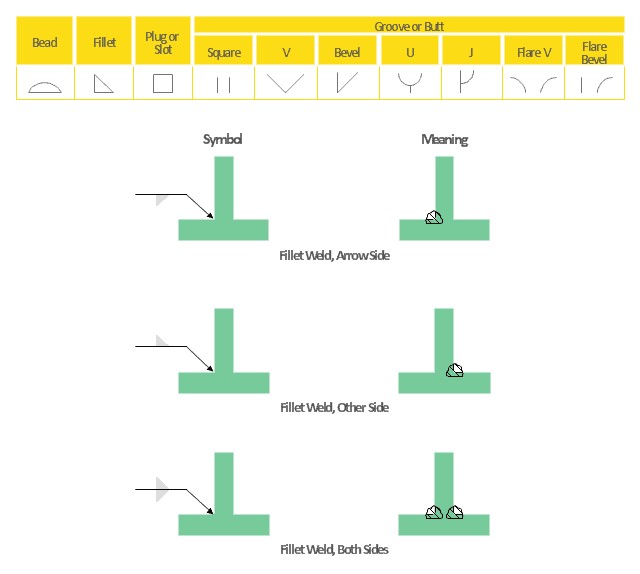
steel structure welding
The main tools used in the steel structure welding are welding electrode and run on plate. When selecting the welding rod, its model must be strictly following the design requirements. Then the welding rod should be baked according to the relevant instructions and placed in a heat preservation barrel for later use. Besides, in the welding process of steel structure buildings, it is strictly prohibited to use some electrodes with rusty cores, and acid and alkaline electrodes must not mix. Finally, when welding important parts of steel structure buildings, it is suitable to choose alkaline electrodes. When the welded steel structure parts need to be grooved, the arc starting plate needs to use, and the material selection of the arc starting plate must be the same as the material of the welded part.
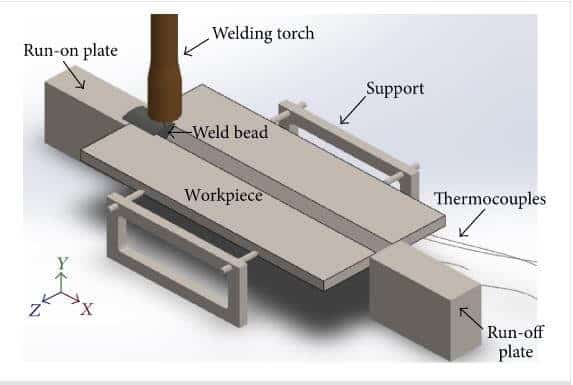
run on plate
The welding tools in steel building projects mainly include electrode holders, electrode insulation barrels, ovens, and electric welding machines.
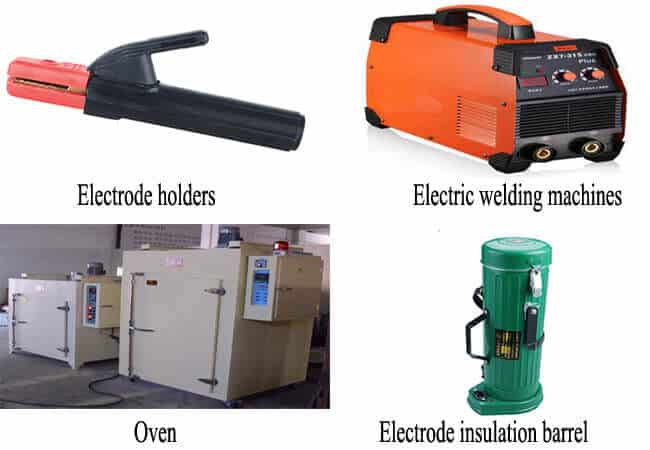
Steel Structure Welding Tools
Welding at low temperatures will cause rapid heat loss. For this reason, when the thickness of the steel reaches a certain level, the multi-layer welding process technology can be used appropriately. Besides, to prevent the rapid decrease of temperature, when welding a particular gap, it must be completed at one time to avoid the phenomenon of welding interruption. If a disruption occurs, it should handle adequately. Finally, in windy and snowy weather, welding should avoid as much as possible. If welding is indeed required, tents should set up, and then the steel structure should be welded indoors. At the same time, the welding process must ensure that the wind speed is within the appropriate limits. After the welding completed, proper materials should use to cool the welded objects slowly.
Reasons for Steel Structure Welding Deformation
Welding deformation mainly refers to the strain of the steel structure caused by high temperature during welding and the residual deformation problem that occurs in the structural steel member after the welding completed. Among the above two types of welding deformation, the most affecting welding quality is the residual welding deformation. The influence of residual welding deformation on steel structure buildings divided into overall and local distortion, and according to the shape characteristics of the deformity, it split into angular distortion, longitudinal bending, and buckling distortion, etc. Local deformation includes angular distortion and longitudinal bending, and overall strain also includes buckling distortion and so on. In the welding process of steel structures, the most likely type of deformation is the total deformation.
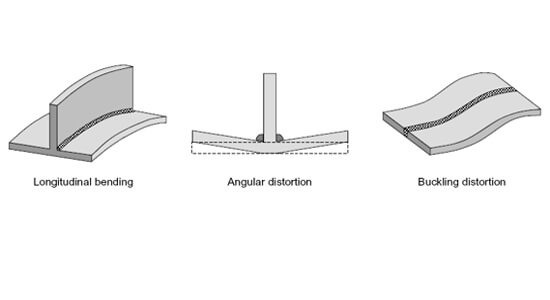
steel structure welding distortion
The rigidity of the steel structure is undoubtedly one of the main factors affecting the welding deformation. The stiffness of the steel structure is mainly for the resistance of the structure to deformation such as bending and stretching, and the rigidity of the steel structure depends mostly on the steel The size of the structure, cross-sectional shape. Besides, the location and number of welding joints also affect the degree and condition of welding deformation to a certain extent.
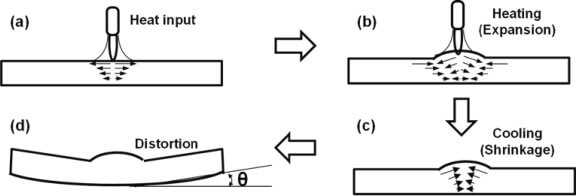
When the rigidity of the steel structure cannot reach a certain standard, the symmetrical position of the steel structure used as the welding joint. If the welding sequence is reasonable, the structure can only produce linear deformation, and it is impossible to produce bending deformation. Finally, the welding process also affects the degree of welding deformation to some extent. For example, when the welding current is large, and the welding speed is slow, it will cause more severe welding deformation. For this reason, in the process of welding steel structures, we must customize the objective and reasonable welding process measures and methods.
Deformation prevention work caused by steel structure welding process
To further avoid and improve the welding deformation, we should pay attention to the following aspects when designing the welded joints of the steel structure:
a. First, the number and size of the welds should control. When the steel structure has the problems of a large number of welds and large quantities in the welding process, it will provide more possibilities for welding deformation. For this reason, when designing the welded joints of steel structures, the number and size of welds should be controlled to a certain extent as possible to improve the welding deformation further;
b. Secondly, the appropriate size and shape of the weld groove should select as much as possible. The reasonable and scientific selection of the size and shape of the weld groove can not only ensure the load-bearing capacity of the steel structure to a certain extent, but also reduce the cross-sectional area to a certain extent, and thus control the amount of welding deformation effect;
c. Besides, in the welding process of steel structures, the position of the welding node should be as symmetrical as possible in the cross-section of the object. For the selection of the welding node of the neutral axis, the welding node should be as close as possible to the neutral axis, and at the same time, avoid being in or close to the high-stress area.
d. Finally, the choice of node forms should be as rigid as possible. At the same time, the nodes should not set at multi-directional intersections. Only in this way can the welding deformation due to the high-temperature concentration and stress concentration of the weld be avoided.
Improvement of the welding process of steel structure building
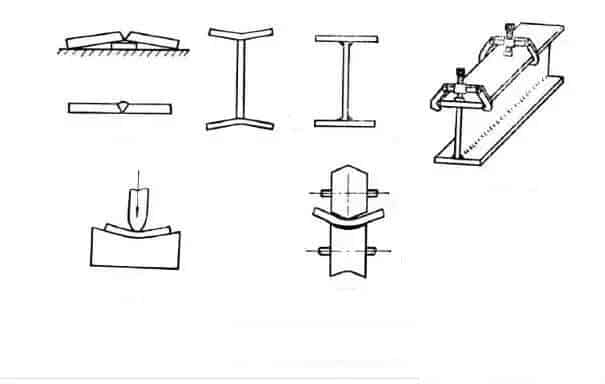
The improvement of the welding structure of the steel structure plays a vital role in the development of the welding deformation. Its specific operations mainly concentrated on the following different aspects:
a. First, the welding sequence selected during the assembly and welding of the steel structure. Regarding the construction and manufacture of steel structures, relevant personnel should strictly follow the applicable regulations and requirements to operate at the standard level. Only in this way can we ensure the corresponding weight-bearing pressure to a certain extent, and then better meet the needs and standards for component assembly. In the welding process of steel structure, the welding of small welding components completed at one time, and then the appropriate welding sequence selected for construction. For some relatively large steel structure welding and assembly, the minor components welded first, and then the corresponding assembly and welding work. To prevent the deformation of the elements during construction, the selection of component models must comply with the relevant regulations and requirements. Besides, excessive forced force splicing should be avoided as much as possible during assembly. Finally, in the process of component welding and construction, the heat uniformity and temperature appropriateness of the welded joint should be maintained as much as possible to prevent welding deformation due to uneven heat.
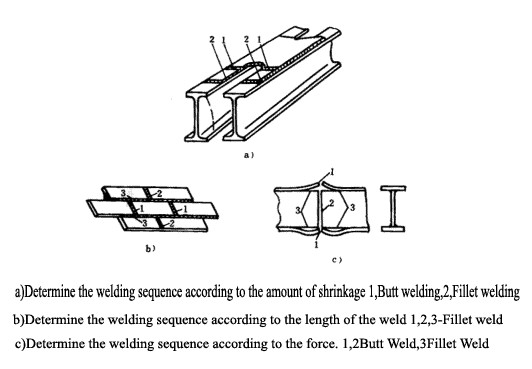
b. Secondly, the corresponding anti-deformation work done. During the welding process of the steel structure, due to the shrinkage principle after cooling, an individual shrinkage reaction will occur in the weld, which reduces the original size of the component to a certain extent. For this reason, in the welding process, people often use anti-deformation to further compensate for the deformation problem caused by thermal expansion and contraction. The anti-deformation method is to artificially generate a specific deformation of the component in the early stage of the welding process. The deformation direction is opposite to the later welding deformation direction, and the degree of distortion is the same as the following deformation degree.
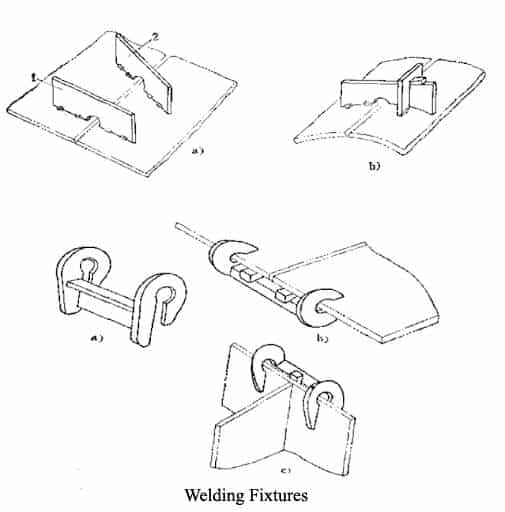
c. Finally, we must have corresponding welding fixtures. For the welding of some more significant components, not only need to have a relevant welding platform but also to prepare corresponding welding fixtures to fix its parts better.
- Pre:Precautions for Steel Structur 2024/4/23
- Next:Prefab Steel Structure Worksho 2024/4/23
